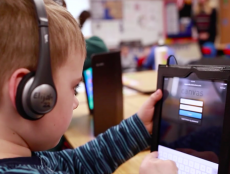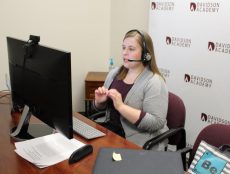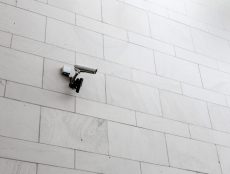
Articles
Holography-Assisted Learning – Science Fiction or Reality?
By eLearning Inside
March 01, 2019
Since the industrial revolution of the early 1900s, innovations have caused major changes in society. One of the spheres of human activity on which they have had the most profound impact is undoubtedly education. The way we study now differs fundamentally from the education in the previous century. Today, we can enjoy technological advances that Gen X could only think of in terms of science fiction. For example, in the fall of 2015, the percentage of students who took online learning courses reached 30%, and this figure is trending up.
Nowadays, education is becoming increasingly interactive. The internet has provided us with opportunities for online learning, and we are now able to attend classes online and have open access to information sources from all over the world. However, it doesn’t just stop there, and we have yet to see the arrival of a new era of 3D technologies and holograms.
Introducing Holograms
The joint efforts of Microsoft, Pearson, and Canberra have resulted in the development of the HoloLens — a holographic headset, which helps people interact with objects in augmented reality.
Developed for educational purposes, the device has the potential to dramatically enhance the learning process. Though it is only a prototype, it can still provide students with a wide range of opportunities. With its help, they can create, change, and disassemble objects of any type.
Empowering Lecturers
Nowadays, lecturers may find it really challenging to explain the structure of complex objects, such as the solar system, the human body, or soil. The problem is that students have different learning styles; thus, the way they visualize information may differ significantly from the real thing.
The HoloLens is a perfect tool to solve this problem. Creating a holographic projection of a real system and breaking it down into smaller parts can help lecturers explain things in several hours, and not spend an entire course on it. For example, there is no better way to let students know what the human body is made up of than creating its life-size virtual replica and allowing them to study each part separately.
Holographic Telepresence
The holographic presence technology can open up a whole new dimension in interactive online education. All it takes is a projector and transmitter that scans a person’s body. Once your body is scanned, you can enjoy guest lectures from all over the world by being present in the virtual classroom and sharing the same workspace.
One of the possible applications of this technology is creating standardized classrooms that support hologram guest lectures in every university. They can be identically sized and fitted out with the same equipment. Thus, constructing the same workspaces worldwide will make it possible for students to attend lectures conducted by Google developers, NASA astronauts, Olympic games winners, book authors, etc. The presenter will be able to teach students from all over the globe by being physically present only in one classroom, while their listeners will see their holographic projection.
Expanding Horizons of Virtual Reality
Motivating students to learn means getting them involved and feeding their curiosity. By combining the HoloLens and virtual reality technology, they will be able to experience total immersion in situations they cannot experience in the classroom. Imagine being in a virtual milieu with programmed people, objects and environment. And the best part is that it is applicable to students of all ages.
VR can be extremely useful for imitating emergency situations. By having their students experience simulated fires, armed robberies, earthquakes and gas leaks, teachers will be able to effectively monitor their behavior. They can do that with the help of special software capable of analyzing individual behavior patterns and providing feedback on the actions performed in a particular situation.
Another potential area of application is business. In a not so distant future, you will be able to buy a case study assignment and take part in negotiating contracts or conducting political talks in a totally simulated environment. Thanks to VR, you will get to analyze gestures, the tone of voice and other important aspects of business people’s behavior during their meetings.
The Hologram Era
Though it may appear unlikely, holographic studies are already available in some school curriculums. For example, high school students in Canberra are being taught with the help of augmented reality and the HoloLens technology. It allows them to enter ancient buildings, get inside the molecular structure of chemical elements and witness historical events, such as World War II.
There is no doubt that the hologram technology will be integrated with all school curriculums soon. Thanks to it, teachers will spend significantly less time on explaining new material. Moreover, it can also change the whole concept of conducting exams. Thanks to it students will be able to deal with real-life situations, such as surgeries and dangerous chemical reactions.
Featured Image: JComp, Freepik.









One Comment